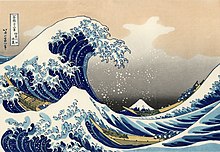The creative arts are often divided into more specific categories, such as decorative arts, plastic arts, performing arts, or literature. So for example painting is a form of visual art, and poetry is a form of literature.
An art form is a specific form for artistic expression to take, it is a more specific term than art in general, but less specific than genre.
Some examples include, but are by no means limited to:
An artistic medium is the substance the artistic work is made out of. So for example, stone and bronze are both mediums that sculpture uses sometimes. Multiple forms can share a medium (poetry and music, both use sound), or one form can use multiple media.
A genre is a set of conventions and styles within an art form and media. For instance, well recognized genres in film, for example, are western, horror and romantic comedy. Genres in music include death metal and trip hop. Genres in painting include still life, and pastorial landscape. A particular work of art may bend or combine genre but each genre has a recognizable group of conventions, clichés and troupes. (One note: the word genre has a second older meaning within painting, genre painting was a phrase used in the 17th to 19th century to refer specifically to paintings of scenes of everyday life and can still be used in this way.)
An artwork, artist’s, or movements style is the distinctive method and form that art takes. Any loose brushy, dripped or poured abstaract painting is called expressionistic (with a lower case "e" and the "ic" at the end). Often these styles are linked with a particular historical period, set of ideas, and particular artistic movement. So Jackson Pollock is called an Abstract Expressionist. Because a particular style has very specific cultural meanings it is important to be sensitive to differences in technique. Roy Lichtenstein's paintings are not pointillist, even though it uses of dots, because it is not aligned with the original proponents of Pointillism. Lichtenstein used Ben-Day dots: they are evenly-spaced and create flat areas of color. These types of dots were used to color comic strips and are intended to combine the high art of painting with the low art of comics - to comment on culture and its unreality. Pointillism employs dots that are spaced in a way to create variation in color and depth - it was an attempt to paint images that were closer to the way we really see color - an attempt to get closer to reality. They both use dots but the meaning is opposite.
These are all ways of beginning to define a work of art, to narrow it down. "Imagine you are an art critic whose mission is to compare the meanings you find in a wide range of individual artworks. How would you proceed with your task? One way to begin is to examine the materials each artist selected in making an object, image video, or event. The decision to cast a sculpture in bronze, for instance, inevitably effects its meaning; the work becomes something different than if it had been cast in gold or plastic or chocolate, even if everything else about the artwork remained the same. Next, you might examine how the materials in each artwork have become an arrangement of shapes, colors, textures, and lines. These, in turn, are organized into various patterns and compositional structures. In your interpretation, you would comment on how salient features of the form contribute to the overall meaning of the finished artwork. [But in the end] the meaning of most artworks... is not exhausted by a discussion of materials, techniques, and form. Most interpretations also include a discussion of the ideas and feelings the artwork engenders." [23]



No comments:
Post a Comment